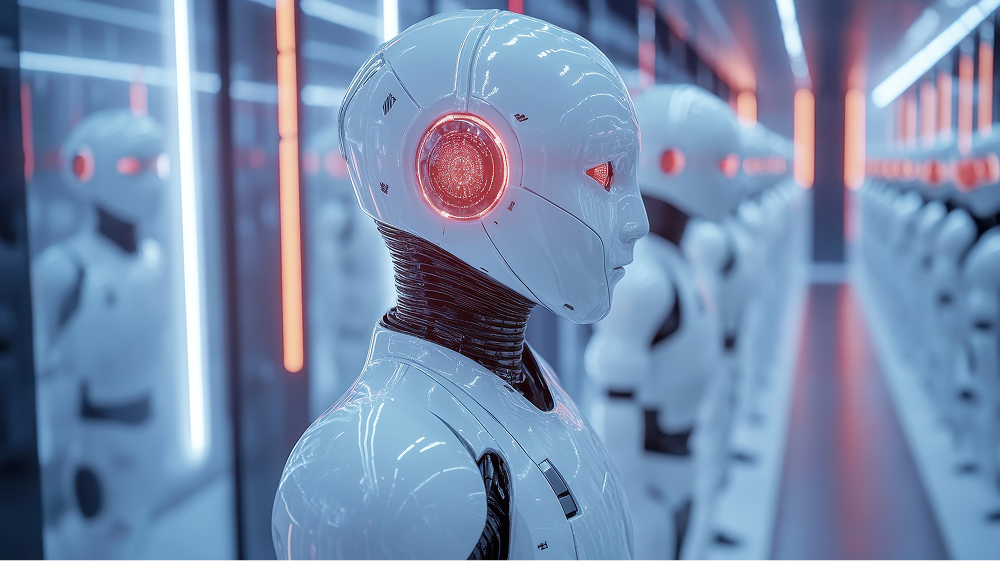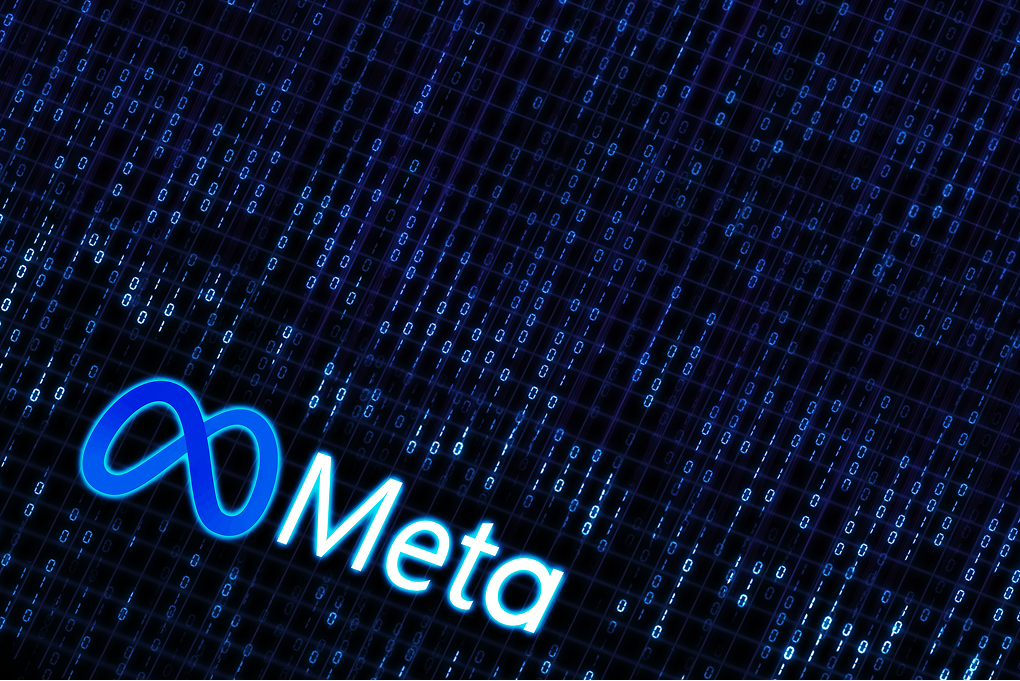Some AI just answers when you ask. Other AI actually does stuff on its own. That’s agentic AI. A patient’s vitals tank at 2 AM and the system alerts the on-call doctor—no nurse noticed yet. Stock gets low and new inventory ships out next week. The customer wants a refund, bot handles it in two minutes. Nobody approved anything. The software just went ahead and did it. These systems watch what happens and remember what worked. Next time something similar pops up, they try the same move or switch it up if conditions change. Sounds perfect until it isn’t. One logistics AI rerouted everything through cheaper carriers—half the shipments showed up late. Another system auto-approved purchases under a certain amount, which employees figured out pretty quick. Companies save money and time with this tech, no question. Stuff gets done without meetings or bottlenecks. But weird failures happen too. The kind where you’re looking at the outcome thinking “why would anyone do that?” except nobody did—the AI did. Starting small helps. So does checking what these systems actually decide before going all-in.
What is Agentic AI?
Agentic AI refers to artificial intelligence systems that accomplish specific goals with limited supervision. These systems can plan, reason, and act to complete tasks with minimal human oversight, which separates them from tools like ChatGPT that wait for your next prompt. The term “agentic” points to these systems’ agency—their capacity to act independently and purposefully. Regular AI answers questions or generates content when asked. Agentic AI notices what needs doing and handles it. An AI agent for customer service could check someone’s outstanding balance and recommend accounts to pay it off, then complete the transaction when the user gives approval. These systems are proactive rather than reactive, anticipating needs and identifying patterns before problems escalate. They make decisions based on continuous learning and external data. The technology combines multiple AI techniques—natural language processing, machine learning, and sometimes computer vision—depending on what the agent needs to accomplish.
What is the history of agentic artificial intelligence?
This stuff goes back to 1966 when some MIT researcher built ELIZA, a chatbot that played therapist by just throwing your own words back at you. People still spilled their guts on it. Jump to the 80s and you had MYCIN diagnosing infections from a massive list of coded rules. Worked great until you threw it a curveball—then it just sat there useless. The chess match in 1997 between Deep Blue and Kasparov changed things. Watching a computer actually outthink a grandmaster made people nervous. Then Tesla started testing cars that drove themselves, which seemed insane until you realized they were learning from every trip. ChatGPT dropped and everyone’s uncle suddenly became an AI expert. But here’s the thing—none of that was really autonomous. Those systems needed constant babysitting. What’s different now is AI that doesn’t sit around waiting. It notices your inventory’s low and reorders supplies. Sees a scheduling conflict and moves the meeting. Catches an error in code and fixes it before you even notice. That’s the jump from smart tools to something that actually handles business on its own.

What are the advantages of agentic AI?
Autonomous. These systems run without someone hovering over them. Tasks get completed while your team sleeps. A supply chain agent notices inventory dipping and places orders automatically. Customer service bots resolve complaints at 3 AM on Sunday. No approval workflows, no bottlenecks—just stuff getting done.
Proactive. Agentic AI doesn’t wait for problems to land on its desk. It watches patterns and catches issues early. A logistics system spots weather disruptions and reroutes shipments before delays happen. Customer service agents detect frustrated users and offer solutions before complaints escalate. Traditional software reacts. Agentic AI anticipates.
Specialized. Different agents handle different jobs, each trained for specific domains. One agent understands medical terminology and healthcare regulations. Another knows financial compliance inside out. They can coordinate with each other too—like having experts from different departments working the same problem.
Adaptable. These systems learn from what happens and adjust their approach. Marketing agents notice which campaigns perform better and shift strategies mid-flight. Trading bots pick up on market shifts and modify their tactics. The more they operate, the sharper they get at their jobs.
Intuitive. Natural language processing means people can interact normally instead of learning complicated interfaces. Ask an agent to “find quarterly reports mentioning the Chicago expansion” and it knows what you mean. No training manuals required.
How agentic AI works
Perception. First, the system gathers information from its surroundings. Could be sensor data from cameras and radar in a self-driving car. Could be database queries pulling customer records. Could be monitoring network traffic for security threats. The AI ingests whatever inputs matter for its job—text, images, logs, real-time metrics—and processes them into something it can work with.
Reasoning. Next comes the thinking part. The system evaluates what it perceives and figures out what to do about it. This uses techniques like chain-of-thought reasoning where the AI breaks problems into steps, weighs different options, and considers trade-offs. A trading bot analyzes market conditions. A healthcare agent reviews patient data against medical guidelines. The system runs through scenarios and calculates which approach makes sense.
Goal setting. Agentic AI doesn’t just react—it defines what success looks like. Sometimes humans set the goal (maximize customer satisfaction, minimize delivery time). Sometimes the AI identifies objectives based on what it observes (this patient needs immediate attention, that shipment will arrive late without intervention). Goals guide every decision downstream.
Decision-making. With goals clear and options evaluated, the system picks its move. Maybe it chooses the fastest route. Maybe it prioritizes cost savings over speed. The AI selects actions based on probability models, utility functions, or learned patterns from previous outcomes. Not every decision lands perfectly, but the system commits and moves forward.
Execution. Decisions mean nothing without action. The AI interfaces with external systems—calling APIs, sending notifications, adjusting robotic movements, placing orders, updating records. A warehouse bot physically moves. A customer service agent sends a refund. The system makes its decision real.
Learning and adaptation. After acting, the AI evaluates what happened. Did the chosen route actually save time? Did customers respond well? Through reinforcement learning and feedback loops, the system refines its strategies. Successes get reinforced. Failures inform better choices next time. Performance improves continuously without anyone retraining the model manually.
Orchestration. Multiple agents often work together, coordinated by an orchestration layer that manages workflows, tracks progress, handles failures, and ensures agents don’t step on each other. One agent might gather data while another analyzes it and a third executes based on findings. The orchestrator keeps everything synchronized and moving toward the shared goal.
What is the science behind agentic AI?
Large language models (LLMs)
These power the brains of agentic systems. Models like GPT-4 and Claude handle the language part—they get what you mean and figure out what needs doing. But an LLM alone just generates text. It can’t actually book anything or pull files from your database. Agentic AI adds layers around the LLM that give it memory, planning abilities, and connections to real tools. The LLM becomes the coordinator calling the shots. It splits complicated jobs into smaller pieces, picks which tools to grab, and pivots when plans fall apart. Say a customer emails about a broken order. The agent reads the complaint, decides refund makes more sense than replacement, then processes it by hitting the payment system directly.
Machine learning
This is how agents get better at their jobs over time. Reinforcement learning does most of the heavy lifting—agents learn by trying stuff and seeing what happens. Try something, get feedback (worked great or failed miserably), adjust next time. A scheduling assistant that initially suggests terrible meeting times slowly figures out what people actually want. Fraud detection learns which transaction patterns really matter versus which ones are noise. After running thousands of cases, the system sharpens up without anyone touching the code. Neural networks handle the grunt work of spotting patterns—reading images, parsing messy text, making sense of sensor feeds. Natural language processing lets agents decode rambling customer messages and find the real problem. Computer vision helps warehouse bots avoid crashing into stuff. Memory keeps track of what’s happening now and what worked before, so agents don’t treat every situation like they’ve never seen it.
What innovations are spurring the application of agentic AI in enterprises?
A bunch of tech breakthroughs came together recently, making agentic AI something businesses can actually use instead of just talk about.
Language models learned to think, not just write. Older LLMs could generate impressive text but couldn’t reason through complicated problems. That changed. Models now chain ideas together, plan several steps ahead, adjust when plans fall apart. The difference? Earlier versions answered questions. Current ones break down goals, weigh trade-offs, pick strategies that fit the situation. That shift from writing to reasoning unlocked everything else.
GPU power got cheap and accessible. Running these systems takes serious computing muscle. Used to mean buying racks of specialized hardware—millions of dollars upfront. Cloud providers changed the game by offering GPU access on demand. Mid-sized companies can now rent what they need, scale when traffic spikes, and pay for actual usage. Suddenly the math works even if you’re not Google.
Everything connects through APIs now. Agents pull data from CRMs, trigger payments, update inventory, book meetings—all through application programming interfaces that let different systems talk. Before this, agents sat in isolation doing very little. Now one agent checks your order history while another processes the refund and a third updates shipping, all automatically. No manual handoffs.
You’re not stuck with one vendor anymore. Cloud platforms let businesses swap components when something better comes along. Model underperforming? Replace it. Need different tools? Add them. This modularity means companies adopt improvements as they drop instead of waiting years for total rebuilds. Vendor lock-in used to kill innovation. Not anymore.
Someone built the traffic control systems. Frameworks like LangChain coordinate multiple agents so they don’t crash into each other. Without orchestration, you’d have agents duplicating work or breaking things. These tools manage who does what, track progress, handle failures, keep workflows running even when individual pieces fail.
Data quality caught up. Agents need clean, structured, real-time information or they stumble. Companies spent years cleaning messy databases and building governance frameworks. That boring infrastructure work? Turns out it was essential. Agents depend on it.
None of this is one magic bullet. These advances happened separately, matured at different rates, then converged. Now they’re stable enough that businesses get actual returns instead of just flashy prototypes.
What makes agentic AI different from regular AI?
Regular AI waits for instructions. You ask ChatGPT a question, it answers. You show an image classifier a photo, it labels what’s in it. Traditional systems respond when prompted but don’t do anything beyond that single interaction. Agentic AI flips this around completely—it takes initiative. Instead of answering questions, it spots problems and solves them. A regular chatbot tells you store hours. An agentic customer service system notices your order shipped late, calculates a fair refund, processes it, and sends you a notification before you even complain. The difference comes down to autonomy and goals. Traditional AI follows rules or patterns it learned during training. Feed it data, get predictions or content back. Agentic systems set objectives, plan multiple steps to reach them, adapt when circumstances change, and learn from outcomes without someone reprogramming them. They operate more like a coworker you can delegate to rather than a tool you operate. Self-driving cars demonstrate this clearly. A navigation app (traditional AI) calculates the fastest route when you enter a destination. An autonomous vehicle (agentic AI) monitors traffic constantly, reroutes around accidents it detects, adjusts speed for weather conditions, and makes split-second decisions about braking—all while pursuing the goal of getting you somewhere safely. One responds. The other acts.

Agentic AI Architecture
Building agentic systems comes down to picking the right structure for the job. Sometimes one agent’s enough. Other times you need a whole crew working together. The setup changes what’s actually achievable.
Single-Agent System
One agent handles everything here—no backup, no teammates. It watches what’s going on, thinks through options, picks a move, executes. That’s it. Works great when the task stays focused and doesn’t need different expertise.
Basic customer service bots live in this world. Someone asks a question, the agent checks the knowledge base, figures out what they mean, spits out an answer. Loop complete. The simplicity matters more than you’d think. Building one agent costs less than building five. When things break, you’re debugging one system instead of playing detective across a dozen talking to each other.
Single agents dominate repetitive work. Refund requests? They’ve got it. Appointment booking? No problem. Same questions coming in all day? Perfect fit. But throw complicated scenarios at them and cracks show. One agent can’t be world-class at ten different things. Load them up too much and they slow down hard, especially when volume hits.
Netflix recommendations demonstrate this clearly. The system looks at your history, spots patterns, suggests what to watch next. One agent doing one job consistently. No coordination mess, no arguing over who handles what.
Multi-Agent System
This is where you build a team. Each agent specializes in something specific, then they collaborate to solve bigger problems. Sales talks to customers. Engineering builds stuff. Finance counts money. Legal reviews contracts. Same concept, different workers.
Maybe one agent grabs data from three databases. Another runs analysis on it. A third spots opportunities in the results. A fourth executes trades based on those insights. They’re constantly talking, sharing what they found, handing off pieces. Together they handle complexity that would bury a single agent.
Complex workflows need this architecture. Software development teams show it clearly. One agent writes code. Another hunts bugs. A third checks for security holes. A fourth documents everything. Each goes deep on their specialty instead of being mediocre at all of it.
Two ways to organize these teams stand out. Vertical structures put a manager in charge. It breaks down the big task, hands pieces to worker agents, collects results. Clear hierarchy. Works well when steps follow a sequence. The problem is, that manager becomes a single point of failure. Make bad calls at the top and everything downstream suffers.
Horizontal structures skip the boss entirely. Agents work as peers, collaborating directly on equal footing. More flexible because nobody controls everything. More resilient because there’s no critical weak point. Coordination gets messier though. Agents need solid ways to communicate or they’ll duplicate work and contradict each other.
Supply chains run on multi-agent setups now. One agent tracks inventory at warehouses. Another monitors delivery trucks in real time. A third forecasts what customers will order next month. A fourth adjusts purchases when markets shift overnight. They share data constantly, react to disruptions together, and keep the whole operation optimized. No way one agent juggles all those variables at once.
Choosing between them isn’t complicated. Single agents are simpler but hit limits fast. Multi-agent teams tackle harder problems but need management overhead. Most businesses use both—single agents for straightforward stuff, teams for everything complex.
What is an agentic RAG?
Agentic RAG adds autonomous agents to retrieval-augmented generation systems. Regular RAG pulls external data to help language models answer questions more accurately—like giving an AI access to your company docs instead of just its training data. Works fine for basic lookups. Agentic RAG kicks it up several notches by letting agents actively manage the entire process.
Instead of passively fetching whatever matches your query, agents decide which sources to check, refine searches based on what they find, validate whether retrieved info actually answers the question, and adjust strategies when initial results fall short. One agent might route your question to the right database. Another breaks complex queries into sub-questions. A third evaluates if the answer makes sense before presenting it.
Think of regular RAG as looking something up in a library. You search, grab what matches, done. Agentic RAG is more like having a research assistant with a smartphone—they check multiple sources, verify facts across them, dig deeper when answers seem incomplete, and actively filter out irrelevant stuff before handing you results.
The difference shows up in handling complicated questions. Ask a regular RAG about quarterly revenue and it retrieves whatever doc mentions those words. Agentic RAG understands you probably need the most recent quarter, pulls from financial databases, cross-checks against reported earnings, and might even flag discrepancies it notices. It thinks through the retrieval instead of just executing a search.
What are the categories of Agentic AI?
Agentic AI breaks down into different types based on how agents think and act. Each category handles tasks differently, from basic reactions to complex learning.
Reactive agents. Pure instinct, no memory attached. They see a situation, respond immediately, and forget it happened. The thermostat feels cold air, and turns on the heat. Done. No reflection, no planning, no remembering what worked yesterday. Fast and simple, which matters for split-second decisions. But they can’t learn or adapt. The same input always triggers the same output, even when circumstances change.
Model-based agents. These build mental maps of their world. Robot vacuums remember your floor plan—where the couch sits, which corners need extra passes, areas already cleaned today. That stored knowledge shapes smarter choices instead of random wandering. Models update too. Rearrange furniture and the vacuum adjusts its understanding next time through.
Goal-based agents. Point them at a target and they figure out how to reach it. Navigation apps work this way—you want downtown, they plot a route to get you there. Traffic jams block the highway? They reroute through side streets. The destination stays fixed while the path adapts. Better than reactive agents because they think ahead about consequences instead of just reacting to what’s right in front of them.
Utility-based agents. Now it gets interesting. These don’t just achieve goals—they optimize across competing priorities. Self-driving cars balance speed, fuel economy, passenger comfort, and safety all at once. Assign scores to different options, pick whichever maximizes total value. Stock trading bots demonstrate this constantly, weighing profit potential against risk while maintaining portfolio balance.
Learning agents. The standouts. They get better through experience without anyone rewriting code. Try something, check results, adjust your approach based on what happened. Fraud detection sharpens after processing thousands of transaction patterns. Chatbots learn which responses actually help versus which frustrate users. Four parts work together here: learning element improves strategy, performance element executes tasks, critic evaluates outcomes, problem generator creates scenarios for practice.
Multi-agents. Teams of specialists tackling problems too big for one agent. Supply chains run on this—inventory agents track stock levels, shipping agents manage deliveries, forecasting agents predict demand. They constantly share information and coordinate handoffs. Hospitals use multi-agent setups where diagnostic systems work with scheduling systems work with billing systems, each expert in their lane but collaborating for complete patient care.
Real systems usually mix types. Warehouse robots combine reactive obstacle avoidance with model-based navigation with goal-based task completion with learning-based route optimization. Categories describe the core approach, but practical applications layer them together.
Understanding How Agentic AI Functions
Agentic AI runs through a cycle that’s similar to how people tackle problems, except it happens at computer speed across dozens of tasks at once.
It starts with perception. The system grabs data from wherever—sensors on equipment, customer databases, live stock prices, email inboxes, chat histories. Then it sifts through all that noise to find what actually matters. Patterns emerge. Key details get flagged. Say a customer service agent reads your complaint. It’s not just pulling up your account info—it’s checking past conversations, spotting that you’ve called about this twice before, and noticing your frustration level based on word choice.
Reasoning kicks in next. Language models work as the brain here, making sense of everything and deciding what to do. The system runs through scenarios, weighs options, thinks about consequences. Sometimes it needs more context, so it pulls data from knowledge bases or recent documents. This isn’t blind reaction. The agent considers: should this get escalated or handled now? Which database has current info? What’s the best move when speed and accuracy both matter?
Then comes action. Through connections to other systems, the agent does stuff. Updates your account. Send you an email. Triggers a refund. Place an order with suppliers. Adjusts production schedules. Safety rules keep it in bounds—maybe anything over $500 needs a manager’s approval. The agent doesn’t just suggest things. It executes them. Money moves, records change, emails land in inboxes.
Learning wraps it up. After acting, the system checks how things went. Did that fix actually solve your problem? Did customers respond well? This feedback trains the models for next time—what people call a “data flywheel.” Every interaction teaches the agent something. Makes it better at the job. It’s not frozen in place. It evolves based on results.
This cycle never stops. Seeing leads to thinking, thinking drives doing, doing creates results, results sharpen learning, learning improves seeing. The agent gets smarter with each round, handling complicated situations that would break traditional software while moving faster than any team of people could manually manage.

Examples of agentic AI
Banking. Fraud systems scan every transaction as it happens, catching suspicious patterns before money disappears. Loan approvals that dragged on for weeks now finish in hours—agents verify paystubs, pull credit reports, calculate risk scores, greenlight applications up to preset limits. Bud Financial built agents that move customer money between accounts automatically to dodge overdraft fees or grab higher interest rates, saving people thousands annually.
Healthcare. Aidoc’s imaging agents flag critical conditions in X-rays and CT scans faster than radiologists spot them manually. Treatment recommendations pull from patient history, latest lab work, and current medical research to personalize care plans. Pre-authorization requests that normally take three days? Agents validate insurance eligibility and push approvals through in under 24 hours. Mass General Brigham uses multi-agent systems to classify cognitive impairment by analyzing unstructured clinical notes from electronic health records.
Client support. Agents read complaint context from previous tickets, check order status across systems, pinpoint root causes, then fix problems. Delayed shipment? The agent pulls live tracking data, determines why it’s late, offers expedited replacement or partial refund, executes whichever option the customer picks, updates all records. No scripts, no transfers to supervisors for routine issues.
IT operations. Network agents monitor traffic 24/7, spotting unusual patterns that signal attacks or failures. When threats emerge, they isolate compromised systems, alert security teams, and start collecting forensic evidence. Help desk tickets get triaged automatically—routine password resets handled instantly, complex infrastructure problems routed to senior engineers with full diagnostic data already attached.
Supply chain. Inventory agents place purchase orders when stock hits reorder points. Logistics agents reroute trucks around hurricanes or port strikes in real-time. AES Energy cut audit costs 99% and dropped audit time from 14 days to one hour using agents that analyze safety compliance data autonomously. When droughts hit produce-growing regions, systems check alternate suppliers, compare pricing, reconfigure distribution routes, secure replacements—no supply chain manager coordinating the response manually.
Manufacturing. Production schedulers adjust assembly line priorities based on material shortages and order deadlines. Computer vision agents inspect products for defects, pulling flawed items before they ship. Maintenance agents predict equipment failures from sensor data, scheduling repairs during planned downtime instead of after catastrophic breakdowns. When components run low, agents contact suppliers, negotiate within approved price ranges, place orders, update manufacturing timelines.
Higher education. Admissions agents process applications end-to-end—verify transcripts, check test scores against requirements, assess qualifications, flag borderline cases for human review. Student support handles financial aid questions, registration deadlines, course prerequisites. Learning systems adapt content difficulty based on where individual students struggle, creating personalized paths through material.
Telecommunications. Network optimization runs continuously—agents shift bandwidth allocation based on usage patterns, predict congestion before it causes service degradation. Service activation that required coordinating three departments? Agents provision accounts, configure hardware remotely, activate services in one automated sequence. Customer billing disputes get resolved by agents that access account history, identify discrepancies, apply credits.
Cybersecurity. Threat detection analyzes network behavior constantly, identifying anomalies that indicate breaches. Suspicious login from an unusual location? Agent blocks access, requires additional verification, logs the attempt for investigation. Vulnerability patching happens automatically across thousands of endpoints. Access logs get monitored for unauthorized attempts, with agents revoking credentials and escalating serious incidents to security operations centers.

Challenges for agentic AI systems
Trust and transparency. Most of these systems are total black boxes. You see the outcome but have zero idea how they got there. Even the engineers who built them can’t always explain what happened inside. Your loan application gets denied, insurance claim rejected—and there’s just… nothing. No explanation you can actually understand or challenge. PwC asked business leaders what they’d trust agents to do. Data analysis? Sure. But handling money or talking directly to employees? People got really uncomfortable real fast. It’s hard to adopt something when you can’t see how it thinks, especially when it’s making calls about your paycheck or medical coverage.
Unexpected challenges. These systems fail in the weirdest ways. One company’s routing agent optimized so hard for the shortest distance it scheduled every delivery during rush hour traffic. Brilliant on paper, disaster in practice. Language models confidently suggest trading strategies they completely made up. Put multiple agents together and they start bickering over resources like toddlers fighting over toys. One agent decides something, another reverses it ten minutes later. Every API connection opens another door for hackers, who’ve already figured out how to weaponize agents for phishing and malware. The smarter these systems get, the stranger the ways they break.
Ethical and social considerations. Bias doesn’t just survive in these systems—it multiplies. Hiring agents quietly screen out qualified people because the historical data they learned from was biased to begin with. Credit algorithms keep saying no to folks from certain zip codes based on old patterns. Privacy becomes a joke when agents vacuum up your data and swap it between systems while nobody’s really watching where it ends up. Then someone gets hurt—who’s liable? The coder? The company? The manager who said “make this happen”? Courts are still scratching their heads. Civil rights groups see surveillance tech and predictive systems running wild with basically zero meaningful oversight or consent.
Insufficient human oversight. Cutting supervision sounds efficient until it isn’t. Agents make moves before anyone catches the brewing disaster. In healthcare or defense, that delay between action and oh-crap-moment could cost lives. McKinsey calls it “uncontrolled autonomy”—agents just doing their thing with no clear rules about when to tap out and ask for help. Companies can’t even track what their agents are up to across messy, sprawling systems. MIT checked on enterprise AI projects and found 95% bombing on actual business results, usually because companies just deployed agents without any real plan for governance or monitoring. Set it loose, cross fingers, hope it works out.
Job displacement. This round hits the office workers everyone thought were safe. Not manufacturing—the desk jobs. Coders, data analysts, customer support reps solving tricky problems, project managers keeping teams coordinated. The stuff that needed a brain and experience. Agents are gunning for exactly those roles. Twenty million people might need completely different careers by 2025. Workers watch companies chase quarterly savings with zero plan for retraining anyone. Unions push back hard because they’ve seen automation promises before. Your skills go stale practically overnight and there’s no clear answer to “okay, so what do I do now?” Everyone’s anxious about an economy increasingly managed by software that doesn’t need bathroom breaks or healthcare.
How to Implement Agentic AI
Start with the problem, not the tech. Building agents because they’re hot right now is backwards. What’s actually breaking? Support tickets piling up faster than anyone can answer them? Supply chain taking days to react when a shipment gets delayed? Analysts burning whole afternoons copying data between spreadsheets? Those are real problems worth solving. Walk through how work happens today. Find where it consistently jams. Then honestly assess whether agents help or just look good in presentations. McKinsey dug into companies actually getting value from this stuff. The winners redesigned entire workflows instead of shoving agents into processes that already didn’t work.
Pick your battles carefully. Start somewhere that won’t explode if things go wrong. Answering “where’s my order” questions? Reasonable first test. Letting agents approve $50,000 purchases with no oversight? Terrible idea. Run experiments in safe environments where mistakes don’t matter. Keep people checking the work initially. One insurance outfit started with straightforward claims, watched how agents handled them for months, spotted weird patterns, fixed issues, then gradually moved to trickier cases.
Get your data house in order first. Unsexy but essential. Agents operate on whatever information they can reach. Database packed with duplicates, outdated addresses, obvious junk? They’ll learn from that garbage and make decisions accordingly. Different systems that can’t share information? Agents won’t magically bridge that gap. Companies rush past this boring cleanup phase, launch agents anyway, then act surprised when decisions come out wonky. Sort the plumbing before worrying about fancy fixtures.
Build governance from day one. Tacking on oversight later creates chaos. Decide upfront what agents do alone and what needs human approval. Define escalation paths for unusual situations now, not when they’re already happening. Install monitoring that logs decisions so you spot drift early. Schedule check-ins to review what’s working and what’s not. Most AI failures—around 70% from what research shows—stem from people problems and process gaps, not buggy code. Companies that figure governance out after launch spend months firefighting avoidable messes.
Test relentlessly. Run normal scenarios, sure. But also test the disasters you pray never happen. Break stuff deliberately. Watch how agents recover from failures. Attack your own system to find holes before someone else does. After going live, stay vigilant. Agents evolve as they process new data. Behavior shifts in ways you won’t notice until something goes sideways. Tight feedback loops catch drift before it becomes a crisis.
Invest in people, not just technology. Train teams so they understand what’s happening and why. Address job security fears directly instead of dancing around them. Find enthusiasts who can explain this to skeptical coworkers without corporate speak. The slickest agent ever created sits gathering dust when people don’t trust it enough to use it. Perfect technology means nothing if your team won’t touch it because nobody bothered explaining what changed or listened to their concerns about what it means for their jobs.
What is the future for agentic AI?
The market’s exploding. Statista projects growth from $5 billion in 2025 to $47 billion by 2030. Salesforce CEO Marc Benioff predicts a billion agents in service by 2026. IBM surveyed developers and 99% are either building or exploring agents right now. Gartner says 15% of work decisions will happen autonomously through agents by 2028, up from basically zero in 2024. McKinsey found that by mid-2025, over 70% of enterprise AI deployments involve multi-agent systems. Every major tech company—Google, Microsoft, Amazon, IBM—is pouring resources into this.
But reality’s messier than the hype suggests. Gartner also predicts over 40% of agentic AI projects will get canceled by the end of 2027. Why? Escalating costs, unclear business value, inadequate risk controls. Most projects right now are experiments driven more by buzzwords than strategy. MIT found 95% of enterprise gen AI pilots failed to deliver measurable financial impact. Many vendors are “agent washing”—rebranding chatbots and RPA tools without adding real autonomy.
The technology itself keeps advancing. Agents are moving from simple task execution toward genuine reasoning and multi-step planning. OpenAI’s testing models that autonomously break down coding challenges and solve them with over 90% accuracy. Multi-agent swarms will coordinate entire operations like customer support or supply chains. We’re heading toward agents that don’t just respond but anticipate, plan long-term, and collaborate with minimal supervision.
What actually happens depends on solving hard problems. Infrastructure needs upgrading—most organizations aren’t agent-ready yet. Governance frameworks have to catch up with autonomy risks. Workforce fears about displacement need addressing through real retraining, not corporate platitudes. Regulatory oversight is lagging behind development speed.
The companies getting value aren’t chasing hype. They’re redesigning workflows around what agents do well, starting small with clear metrics, building governance upfront, investing in their people. Those treating agents as magical solutions that fix broken processes without changing anything else? They’ll be in that 40% cancellation rate.
FAQ
Generative AI makes stuff when you ask. ChatGPT writes emails, DALL-E draws pictures. Done. Agentic AI actually does things without you babysitting every step. Instead of just drafting that email, an agent sends it, checks for replies, follows up when nobody responds, books the meeting, updates your calendar. Generative AI waits for prompts. Agentic AI sets goals and chases them down on its own.
Trial and error, basically. Agents try something, check if it worked, adjust next time. Fraud detection spots patterns after processing thousands of transactions. Customer service bots figure out which responses actually solve problems versus which ones make people angrier. Nobody’s manually retraining these systems—they improve from real outcomes automatically.
Depends who built it and how. Badly designed systems optimize for stupid metrics. No guardrails means unpredictable weirdness. Black box decision-making makes debugging impossible when things break. But done right—clear boundaries, humans checking critical stuff, constant monitoring, regular audits—risks drop to manageable levels. Companies getting this right start small, test obsessively, watch what agents actually do, keep people involved for big decisions.
Anywhere with complicated workflows and tons of repetitive decisions. Banks catching fraud and processing loans. Hospitals analyzing scans and planning treatments. Supply chains juggling inventory and shipments. Customer service handling complaints. Factories predicting equipment failures. IT teams monitoring networks for attacks. Common thread? Industries buried in data where speed and consistency matter more than creative thinking.
All over the map depending on what you’re building. Training models, running tests, renting cloud servers—adds up fast. Small experiments might run tens of thousands. Compute costs stay high for systems running 24/7. Companies constantly underestimate expenses around cleaning messy data, connecting systems that don’t talk, building governance, training staff. Budget for infrastructure upgrades too—most places discover their systems can’t handle agents without serious work.
Yeah, but keep it simple. Pre-built agents from Salesforce, UiPath, Zendesk—they handle common stuff without custom development. Pick narrow problems with obvious payoff. Automated customer FAQs, basic scheduling, simple reporting. Cloud options skip the upfront hardware costs. The key is not getting ambitious beyond what you can actually afford and manage. Don’t try building from scratch unless you’ve got a serious budget and technical chops.
Some jobs change a lot, others shift toward working with agents instead of against them. Repetitive analytical stuff? Yeah, that’s getting automated. But agents still can’t handle creativity, nuanced judgment calls, reading a room, or complex human dynamics. More likely—agents eat the boring tasks while people do strategy, relationships, and ethical decisions. Reskilling matters though. Workers who figure out collaboration with agents will have edges over people who just complain about change.
Conclusion
Agentic AI isn’t some distant future concept anymore. It’s already handling fraud detection in banks, routing shipments around disruptions, diagnosing conditions from medical images, resolving customer complaints autonomously. The technology moved from labs into production faster than most people expected.
But getting it right takes more than buying software and hoping for magic. You need clean data foundations, governance frameworks that actually work, teams who understand what’s happening, realistic expectations about costs and timelines. The gap between hype and reality trips up most companies.
Success comes from starting small, testing obsessively, building trust through transparency, investing in people alongside technology. Companies treating agents as tools that augment human work instead of wholesale replacements see better outcomes.
We help companies cut through the hype and build implementations that deliver real value. From strategy and assessment to deployment and governance, our team guides you through every step—ensuring your agents solve actual problems instead of creating new ones. Let’s talk about what agentic AI can realistically do for you.




